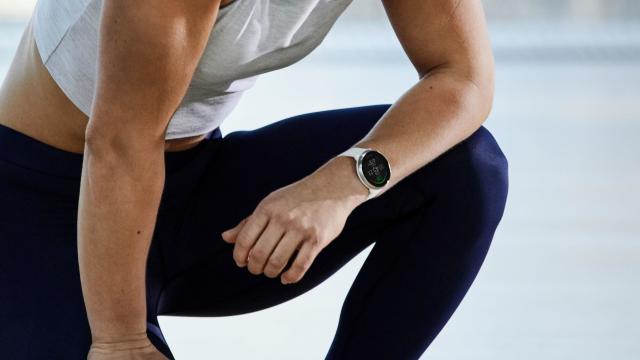Fitness tracking can get old fast, especially if you’re a beginner staring at a bunch of numbers that don’t make sense. Polar in particular, is known for tracking in-depth metrics and that’s given it the reputation for creating wearables meant for serious athletes only. But its latest smartwatch—the Ignite—seems aimed at the more casual enthusiast—the weekend warrior who’s a data dummy.
Editor’s Note: We don’t have local pricing or a release for this as yet.
For starters, the Ignite tones down Polar’s traditionally sporty aesthetic for something more understated. (I mean, look at the Polar M430. It is not subtle.) At a glance, the Ignite could definitely pass as a normal watch, especially if you opt for the white or black versions. The yellow version is still kinda out there, but the round display makes it more fashionably colourful than a garish nightmare you hide under your sleeve. The Ignite also simplifies its controls by opting for a colour touchscreen and only one button. This is a welcome change, as previous Polar watches have relied on buttons and remembering what to press when takes some getting used to.
That’s not to say the Ignite skimps on features. It better not for its $US230 ($331) price tag. Polar says it’s introducing overnight heart rate measurement, better sleep tracking, guided breathing exercises, and personalised training guides to the Ignite. Hardware-wise, you get the same optical heart rate sensors used in other Polar trackers, and as far as variety goes, you can track up to 100 different sports. The Ignite will also include swim tracking, and Polar’s smart coaching features Running Index and Running Program. The former is a score that rates your running performance based on VO2 Max and previous runs, while the latter is a free adaptive training guide for running anything from a 5K to a marathon.
What’s more interesting is how the Polar Ignite will display data to users. For sleep tracking, Polar will introduce a Sleep Score system. That means you’ll get a numeric score on your previous night’s sleep, based on how long you slept and various heart rate data taken through the night. It’s also adding a Nightly Recharge metric, which combines your Sleep Score and status of your autonomic nervous system (ANS). A Polar representative described ANS to me as a mix of heart rate, heart rate variability, and breathing rate to determine how well your body is recovering from training. The idea behind Nightly Recharge is to get a more holistic look at sleep and your body’s physical state.
Depending on your Sleep Score and Nightly Recharge, the Ignite watch will then recommend whether you should do cardio, strength training, or other ‘supportive’ activity. Polar’s dubbing this adaptive guidance feature FitSpark, and it’s purportedly going to be an Ignite exclusive.
None of these features are groundbreaking on their own, per se. Tons of fitness trackers and smartwatches offer variations on sleep scores, insights, and personalised recommendations. It’s just that none of them really tie all of it together to give you a better overall picture of how one aspect of your health may impact another, and how you should adjust your training accordingly. The Ignite seems to taking a stab at telling you how to interpret the relationship between sleep and fitness in real time—but we’ll have to test it out for ourselves to see if it’s actually useful.
Still, it’s nice to see a more accessible option from Polar, in a design that isn’t unnecessarily complicated or just downright hideous. That and, it’s always encouraging to see fitness metrics presented in a more digestible format. The more data trackers collect, the harder it can be to pluck out relevant trends—even for experienced athletes. Contextualizing your data in an easy-to-understand format is a good thing, and takes out a lot of the guesswork for newbies when it comes to building your own training plan. The good news is wearables makers seem to have caught on that data without context is pretty useless. Apple and Fitbit, for example, are both revamping their apps to present data more intuitively.
Right now the Polar Vantage M is our favourite fitness smartwatch, partly because Polar’s recent efforts to clean up its platform make it easier to track your progress over time and during workouts. Fitbits are great, affordable options for keeping things simple, but don’t offer much guidance when it comes to training. Likewise, the Apple Watch Series 4 offers some improved fitness features, but the insights are limited and sleep tracking still isn’t supported natively. We’ll see how the Ignite stacks up to the competition, but if you can’t wait for our review, it’s available on Polar’s website starting today.
